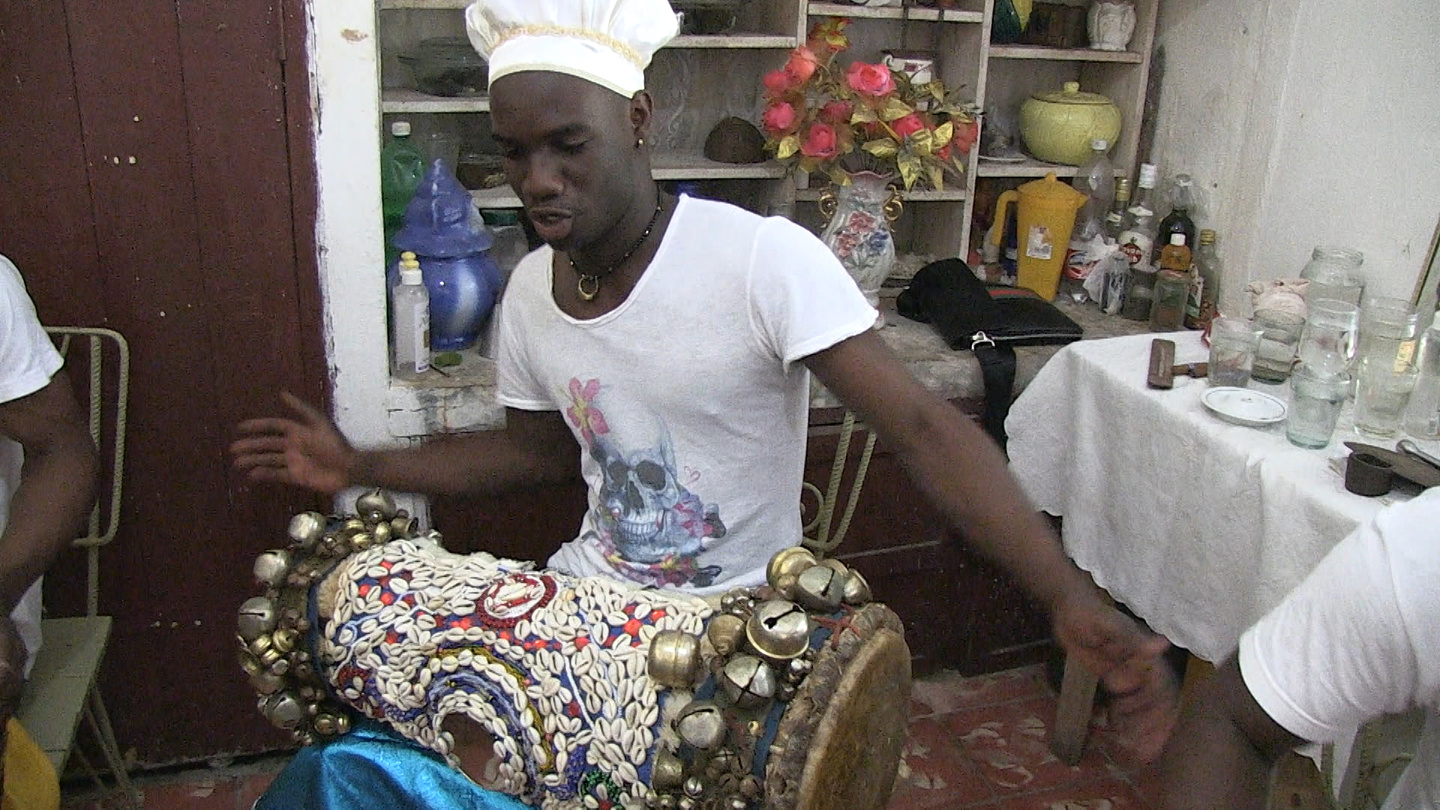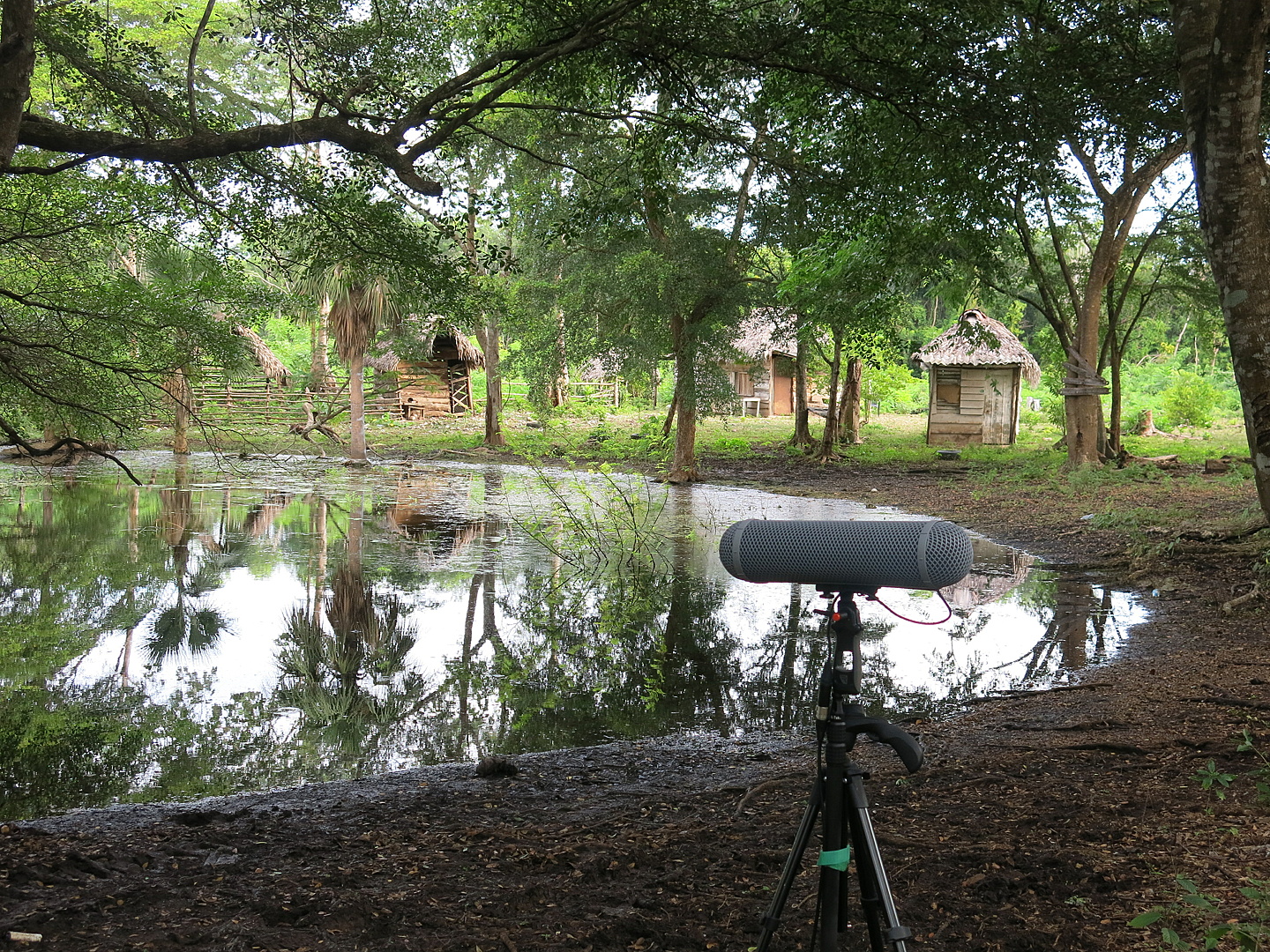Yoruba ritual music recorded in the temple of Yemaya at Álava, Cuba’s largest mid-nineteenth-century sugar plantation.
The former plantation of Álava in the Matanzas province of Cuba evokes sound before one hears it. In January 2017, we went there to record local musicians and were told to meet them near the bell tower. The structure, now silent and in disrepair, is one of the most elaborate plantation bell towers on the island, crowned by a three-story belfry and clock tower that looms over the arched entrance to the old slave barracks. During the years of the plantation’s operation in the latter half of the nineteenth century, the bells were used to regulate the workforce, calling seven hundred slaves to go to work on the two-thousand-acre estate. When, on occasion, slaves defied this call and escaped, Don Julián de Zulueta—the owner of Cuba’s largest plantation and the richest man on the island—ordered search parties to bring back one slave alive. They hung the victim from the arch below the belfry until the person perished and was picked over by the birds, leaving a warning for all who passed through the gate coming and going from working the fields and operating the mill.

Cuban musicologist Cary Diez introduced us to Grupo Omo Layé, featuring this Bata drummer playing the lead Iya drum—decorated with caracol shells and a circular mirror—in the temple of Yemaya at Álava in January 2017.
Walking along Calle Medio, the main boulevard in the city of Matanzas, one hears the cathartic thunder clap of dominos as residents passionately compete on Sunday morning and the theatrical sound of street criers canvasing the town before global business arrives from abroad to organize all advertising in alignment with foreign marketing campaigns. In the center of town we came across renowned bartender Alfredo Comas García, who told of his dream to create a bar named “Bar Matanzas 1945.” He unpacked the history of mixed drinks on the island, beginning with the “cocktails” created by slaves using crudely refined molasses. He described the grandeur of mid-twentieth-century Cuban bars, which often had jukeboxes that played the latest in musical trends from around the island. It was during this era that a group of Matanzas stevedores and rumba musicians created the hit 45 record “Los Muñequitos,” a song of daily comic strips. The group later adopted “Los Muñequitos de Matanzas” as their name. Younger generations of Muñequitos still perform as the iconic rumba group. Comas García described how as a bartender he conversed with everyone from Fidel Castro and leading cultural anthropologists to thirsty Matanzeros who enjoyed one of his original 150 cocktails in the congenial milieu he created. Weeks after our discussion began, Comas García passed away at age fifty.

Recording sunrise animal chatter in the Ciénega Zapata, the largest bio reserve in the Caribbean. The area served as a hunting ground for farmers in Matanzas, including Maria Magdalena’s father, Sotero Arcadio Campos Suri. In the late 1950s Cuban experimental music composer Juan Blanco scored Tomás Gutiérrez Alea’s film Esta tierra nuestra, a documentary on villages in the Ciénega Zapata that was censured by the Batista regime for its depiction of extreme poverty. This recording was made in November 2016 close to Playa Girón (Bay of Pigs), the site where a Cuban American paramilitary group invaded the island in 1961.
At 4 am, the Ciénega Zapata is permeated by the sound of insects chattering away as predators sleep. In this 4,162 square kilometer biosphere, one can imagine Matanzas as it sounded prior to human intervention. We met biologist Nelvis Gómez-Campos from the Cuban Ministry of Science, Technology and Environment, who listened with us in darkness and then, as the sun rose and insect sounds gave way to the fluttering of wings passing above, to the intense chatter of up to 175 species of birds as they vied for spots near estuaries and ponds. A few kilometers from our listening outpost was the staging ground of the Bay of Pigs Invasion, where, in 1961, a CIA-sponsored paramilitary group invaded Cuba with the intention of overthrowing the government of Fidel Castro. For now, the insects and birds own this region and sing a collective song of the Americas.
A stevedor in his youth, 76-year-old Raphael Navaro led this ensemble featuring young José Andro Mella Bosch (soloist) and Reyniel López González.
Photos and audio recordings by Neil Leonard in Matanzas 2016/2017. Recording of Raphael Navaro made with assistance from El Almacen, Matanzas, Cuba.